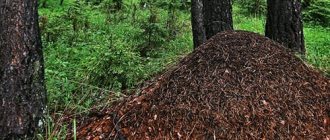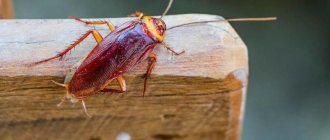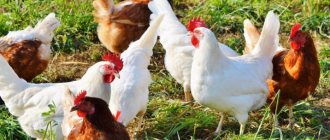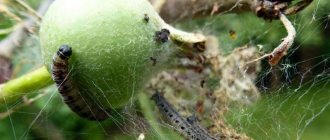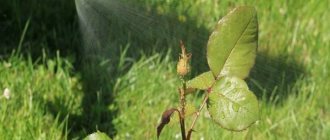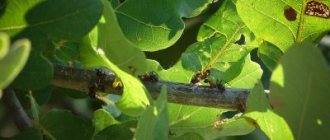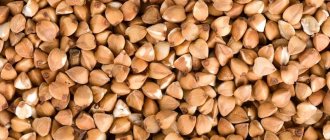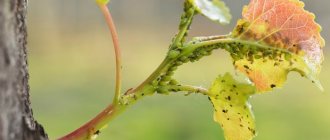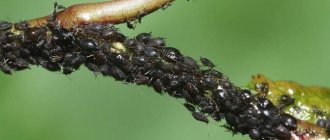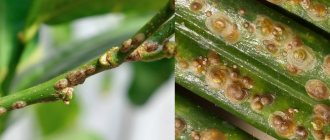One of the attractions that probably every tourist who has visited the kingdom of Morocco has seen is goats grazing on argan branches. The plant, which grows in the south of the country, resembles a Christmas tree, hung not with toys, but with cloven-hoofed animals. These pets are not inferior in dexterity and courage to their wild mountain counterparts. Goats on trees in Morocco are the hallmark of the Atlas foothills.
Why Moroccan goats climb trees
The habitats of these amazing animals are located near the Sahara Desert. A dry, hot climate, poor vegetation, and lack of pasture are the reasons why the herd is forced to climb upward in search of food.
Goats grazing trees in Morocco eat fruits that look like plums with a pit inside. This is the main food for the entire herd. Baby goats graze on the lower branches, rising on their hind legs like dogs and eating leaves and fruits from the lower branches. The goats jump higher, climbing to the very top.
The prickly argan, or ironwood, became a pasture for horned steeplejacks. It grows up to 10 meters in height, has a thick twisted trunk, a hard, prickly crown and roots that go deep into the ground. Thanks to the powerful root system, the plant receives moisture and nutritious leaves and fruits grow on its branches.
In the morning, the shepherd drives the flock, waits until the animals have thoroughly eaten the branches, then drives them further. You can watch how the bravest and hungriest individuals rise higher and higher for food. Having finished their meal, they deftly jump from a great height.
Tree-climbing goats, Morocco
Incredible goats live in Morocco, no, no, in appearance these are the most ordinary goats that can be found here, but only until they come closer to the tree, then you won’t believe your eyes how deftly and quickly they will climb on its top, fearlessly eating the fruits of the tree. And from the waste that goats produce, they create oil for food and cosmetics.
Moroccan goats are an example of the fact that for the sake of their survival, living creatures have to adapt to any conditions. After all, these animals climb to the very tops of trees not for the sake of pleasure, but all in order to get to food and satisfy their hunger. The fact is that in this hot African country there is very little green and lush grass, so the goats had to find a way to get to the green leaves, as well as their favorite delicacy - the fruits of Argan.
The Argania tree (Argania spinosa) is the most common tree here; its trunks are twisted and gnarled and are good for climbing; their height usually reaches about 10 meters, and they live for about 200 years. Thanks to their powerful root system, they can survive in such unfavorable places with a dry and hot climate and lack of fertile soil. But it is also useful for people for its valuable fruits, which look like olives, only fleshier and rounder. And inside the fruit there is a seed from which argan oil is created.
The local Berbers turned out to be very cunning and resourceful (or lazy, so as not to do extra work themselves) and came up with the idea of collecting bones that are not poisoned in the goat’s stomach and fall to the ground along with excrement, then these bones are collected and sold for further processing, during which Argan oil is obtained. This oil is now very popular in the world and is used both for cosmetics, it is believed that it has the ability to rejuvenate the body, and for cooking and salad dressing. The oil is considered healing; it is said to improve immunity, stimulate blood circulation, and also reduce cholesterol levels. True, not everyone will probably want to try this oil, having learned that it, one might say, passed through the digestive system of a goat.
It is very interesting to watch the goats, when the shepherd leads them to the tree, after circling around it a little, they jump up with a powerful sharp jump onto the lower branches, and then, like squirrels, they easily jump from one branch to another, while eating the fruits. Since a herd of 8-10 goats can completely eat an argan tree in a day, a campaign to preserve these trees is increasingly moving forward in Morocco. The shepherd, staying briefly on one tree, drives the goats to the next, driving them with his twig. At the same time, goats are only happy to move from tree to tree; they jump on a new tree with ease and alacrity. Even young goats very skillfully climb argan trees and just as skillfully climb thin branches.
Tourists love to look at these goats jumping and climbing on branches, so they often come to see with their own eyes and make sure that they still exist. Goats that can climb trees can only be found in the southwestern part of Morocco, in the area between the cities of Agadir and Essaouira (closer to Agadir). Fortunately, they can be easily seen right from the highway, which snakes along the coastline of the Moroccan Atlantic, where these funny goats actually graze.
Also on this highway you can see locals selling the previously mentioned argan oil at makeshift stalls. But you need to be careful, instead of argan oil they may give you ordinary olive oil, tinted with paprika. The cost of a small bottle of this valuable product can reach up to $50, but the Berbers here will sell it to you a little cheaper. Gradually, oil producers are refusing to accept seeds from local residents, which are obtained by passing them through the digestive tract of a goat, so it is possible that soon the Sousse Valley and the Atlantic coast between Essaouira and Agadir, where the tree-creeping goats graze, will be declared a national reserve.
Goats in trees - truth or myth
Many, looking at photographs or videos of “flying” artiodactyls, mistake them for animals trained specifically for the entertainment of tourists. But for local residents this is the only way to feed their pets.
Goats in Morocco eat argan fruits, chewing the peel and spitting the seeds down. Residents of those regions collect the seeds and make argan oil from them. Women grind the raw materials by hand and squeeze out the precious product using hand presses. Natural oils are highly prized, such as truffles, oysters or black caviar. Argan trees are called the source of eternal youth, and the oil extracted from their fruits is used to produce cosmetics.
Herding goats help Moroccans earn money through oil production and also provide entertainment for tourists. Animals are very timid, and when strangers approach or the sound of a camera clicking, they scatter in different directions. But enterprising natives organized trees for tourists near popular routes and selected a herd of the bravest individuals. Now travelers coming to Morocco can admire the steeplejacks and take as many photographs as they want.
How do goats stay on top?
The amazing abilities of animals are not explained by magic or training. Moroccan goats, which climb trees, have a special structure of their legs. The hooves are cloven, and a little above the heel there are two rudimentary toes that help to grip the branch more firmly. In addition, the sole pad is covered with suction cups. Argan grows up to fifteen meters, but this height does not prevent animals from reaching the top. Special hooves of local goats hold flying artiodactyls on the thinnest branches.
Argan grows only between the cities of Agadir and Essaouira. The centuries-old practice of growing and using the tree has been declared a world cultural heritage. UNESCO declared the area a biosphere reserve, where about two million argans grow, which, among other things, provide food for flying goats.
Flying goats of Marrakech
In Morocco you can see trees “decorated” with live goats, like Christmas decorations. I even want to rub my eyes.
Argan - tree of life
Marrakesh, one of the largest cities in Morocco, attracts with its green gardens and parks. In Africa, in general, you are always amazed by man-made oases, sometimes completely blooming, which in themselves are already something incredible on the continent of hot sands. Palm and olive groves, orange tree plantations are like a hymn to all life on Earth. After all, a step to the right, a step to the left (on the scale of a school globe, of course) - and that’s it, then the sand, from which the hot air rises, slightly swaying. As the sun sets, it becomes dead and appears dirty gray. Unless you find a thorn in the Sahara open spaces...
Few things grow here without the help of human hands. One of the heroic trees is the evergreen argan (Argania spinosa, or ironwood) - named because of its very strong bark. Apart from Morocco, you won’t find it anywhere else. Argan lives and lives up to 300 years, reaching a height of 15 meters. Its fleshy fruits resemble yellow or red plums and smell of oriental spices. To get one liter of oil from the seeds of these fruits, you need to pick six to seven trees!
A decade and a half ago, the argan was on the verge of extinction, and in 1999 UNESCO declared its habitat a world biosphere reserve.
Goat on a branch
However, what to do with the local goats, which, in the absence of any grass, eat the precious argan leaves? And there’s nothing to say about the fruits. Maybe the ancient and unpretentious goat body is completely indifferent to both vitamin E and the antioxidants for which argan is famous; after all, goats do not strive to rejuvenate or reduce the risk of cardiovascular diseases! They just need natural food, life-giving greens, tasty chewing gum.
In a day, a herd of ten heads can devour an entire argan tree naked. Then the shepherd drives them to the next tree, and they switch to a new “dining table”. After wandering around for a while, as if in thought, the goats begin to eat the lower branches in the pose of a dog begging for a handout. And then, one after another, with a springy jump that even kids are capable of, they jump on them and gnaw at the next floor. It is amazing that as the lower branches are emptied, the rather heavy animals climb higher and higher, ending up on thinner branches that somehow support them: here the amazing instinct of balance is demonstrated in all its glory. Thus, they rise to a considerable height and from a distance look as if scattered across the crown of the argan tree.
The structure of the goat's hoof also greatly contributes to maintaining an incomprehensible balance. It is forked and can move apart, and there are welts along its edges. With these small protrusions, goats can cling to any ledge in the rock, not to mention a tree branch. On the “sole” there is a soft pad, rich in nerve endings, which tightly grips uneven surfaces and sticks to their surface. In addition, above the hooves, goats have two strong rudimentary fingers that help them climb and jump on branches.
Usually goats choose a tree away from the road: oddly enough, these “fearless” animals are quite timid. And yet, some shepherds abuse the great interest of foreigners in unseen things and, for a fee, allow them to be photographed with a touching little goat in their hands against the backdrop of a panorama that captures the imagination of a European.
Andrey Arder
Photography - shutterstock.com ©
Read the continuation in the January issue (No. 1, 2015) of the magazine “Miracles and Adventures”
Similar articles:
- A door to other worlds
Kant Island and the Cathedral have long become the hallmark of Kaliningrad. Now it attracts tourists, but previously it attracted magicians and occultists... - This illusory world...
Among the many mysteries of the human psyche, the phenomenon of pareidolia stands apart. If only because this most amazing phenomenon can be explained... - Riding on a dinosaur,
Man has left his legacy in the literal sense of the word, and in different geological eras. And there are fierce disputes around his petrified traces. Our ancestors are one... - According to cranes and circles,
“There has never been and never will be like this!” - said Master Nestor and threw the ax into Lake Onega. This is how the legend describes the completion of the construction of a wooden church...
